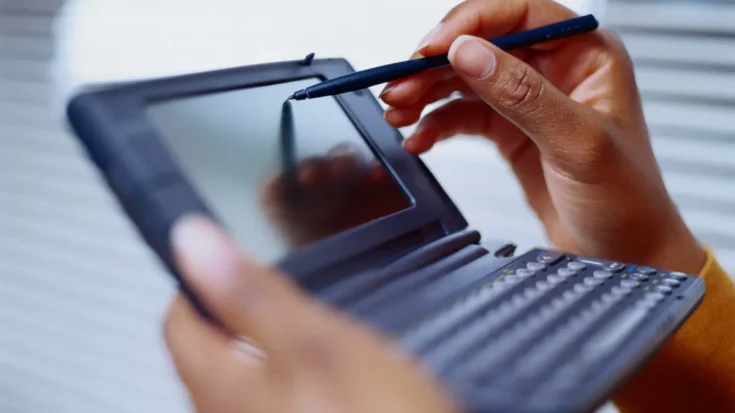The presence of handheld computers helps the industrial operation for data entry, tracking, and operations of field workers, logistics, retail, and other industries that require reliable devices. One type of handheld computer is a medical handheld which has some functions and advantages.
The functions of a medical handheld include recording and accessing data to internal communication tools. Moreover, the advantages include improving the quality of care, increasing efficiency, portability, and mobility.
This article will give you information on medical handhelds from the definition, functions, advantages they have, and their distinctive features.
Also Read
Table of Contents
What is a Medical Handheld?

Medical handhelds are devices that are designed for the needs of users in the health sector, such as hospitals, clinics, and other health facilities. This device helps staff in recording medical data.
This type of computer also has a design that is durable, easy to clean, and safe to use in a sterile environment. So that healthcare staff are helped in the process of managing medical data, managing schedules, and communicating between staff efficiently.
The Functions of Medical Handheld
The medical handheld has several functions from recording and accessing data to internal communication tools. Here are some of its functions:
- Record and access data: Patient data can be digitally recorded and accessed in real-time.
- Managing schedules: Easily manage care and treatment schedules.
- Internal communication tool: This can be used as an internal communication tool between medical staff that needs crucial action.
The Advantages of Medical Handheld

The medical handheld has several advantages from improving the quality of care, to increasing efficiency, portability, and mobility. Here are some of its main advantages in details:
Improving the quality of care
One of the advantages of a medical handheld is that it improves the quality of care with fewer medical errors, improved communication, and good patient monitoring.
Real-time access to information from the handheld computer will help reduce medical errors in giving drugs or diagnoses. With this device, communication between medical staff also becomes better, so as to avoid miscommunication between internal staff, patients, and families.
Increasing efficiency
With medical handhelds, the work of medical staff becomes more efficient with fast access to information, efficient data recording, and integration capabilities with other systems.
With a handheld computer, medical staff can search for information quickly just from the palm of their hand without doing manual checks. In addition, recording patient data can also be done quickly and can be accessed in real-time.
Handheld computers used for medical needs can also be integrated with electronic medical record (EMR) systems, drug ordering systems, and other hospital information systems, so that work becomes more efficient.
Portability and mobility
Another advantage of a medical handheld is portability and mobility as it is easy to carry and flexible. This device is designed to be easily carried to be used in various locations such as the patient’s bed or in the operating room.
That way the work of medical staff becomes more flexible and can still access patient information such as patient records, test results, and drug information from anywhere.
The Distinctive Features of Medical Handheld

Here are some distinctive features of medical handheld:
- Anti-bacterial casing: Possible to use in hospitals as it has an anti-bacterial casing and is easy to clean.
- High touch screen sensitivity: Medical staff can still use this device with medical gloves.
- Integration with other systems: Possibility to connect with EMR (Electronic Medical Record) system.
Those are the definitions, functions, and advantages of a medical handheld that you need to know. Another thing to note is that handheld computers on the market must pass the certification test from the Directorate General of Digital Infrastructure (DJID).
Rugged handheld regulation is based on the Ministerial Decree (KEPMEN) No. 260 Tahun 2024 and No. 12 Tahun 2025, which requires all radio frequency-based devices, including barcode scanners, to meet specific technical standards before being sold in the country.
With DJID certification, users can feel calm about using a handheld computer device whose quality and security are guaranteed. For manufacturers or importers of handheld computer devices, obtaining certification from DJID is a mandatory step before the device can be officially marketed in Indonesia.
To simplify the certification process, Type Approval Certification Services for ICT Products are available to assist with this process as a reliable solution.











